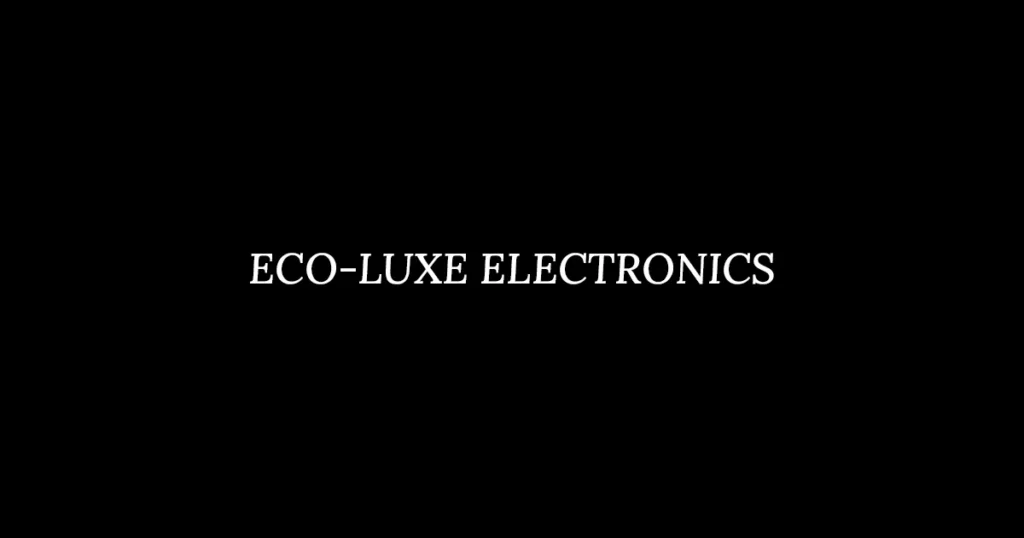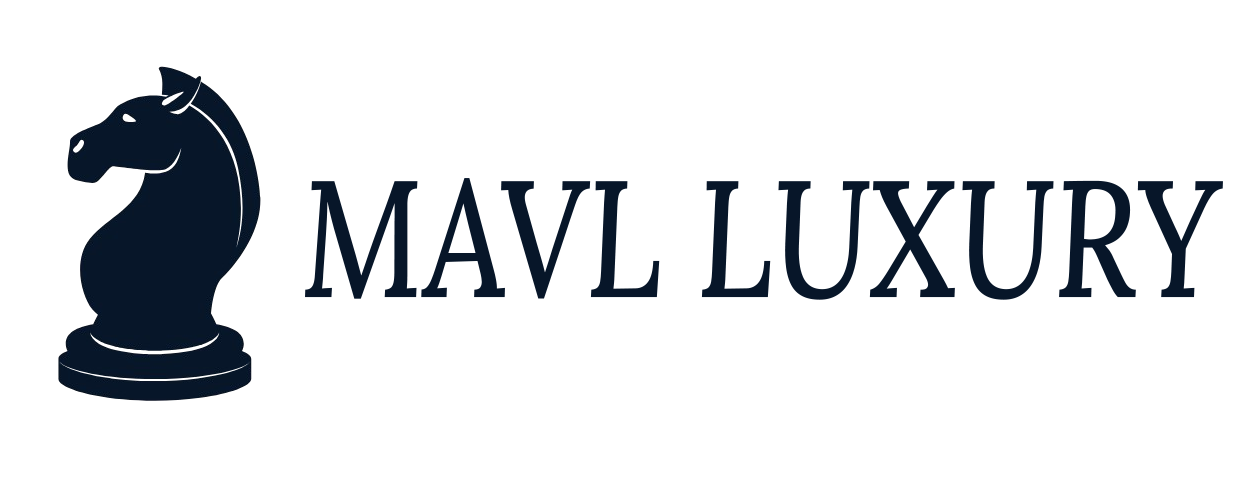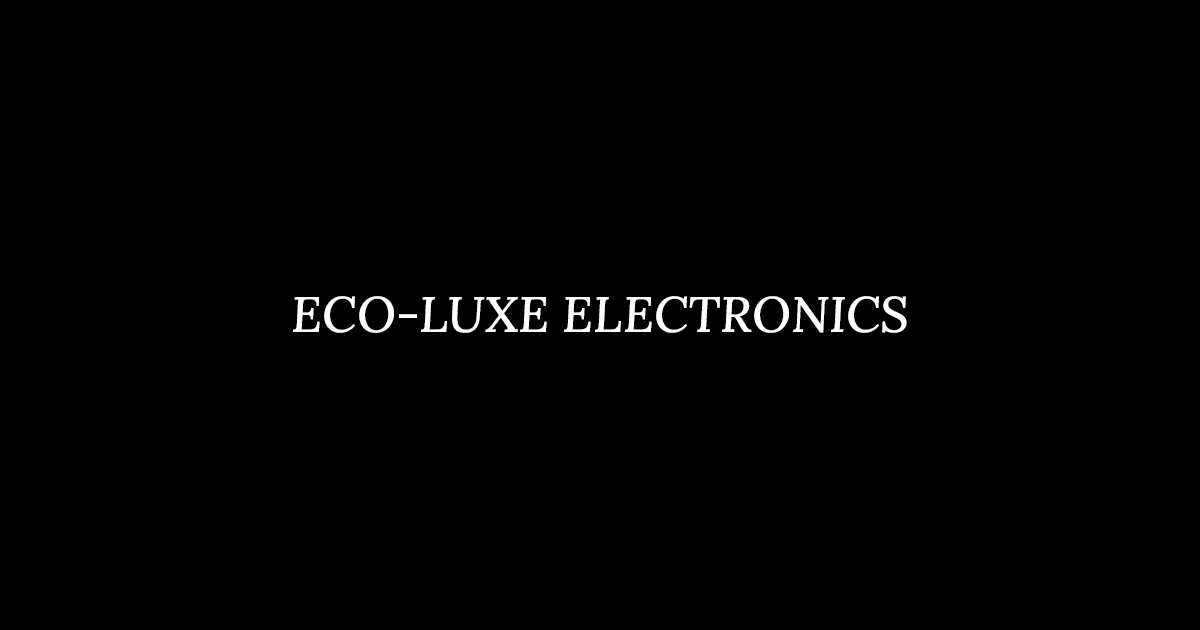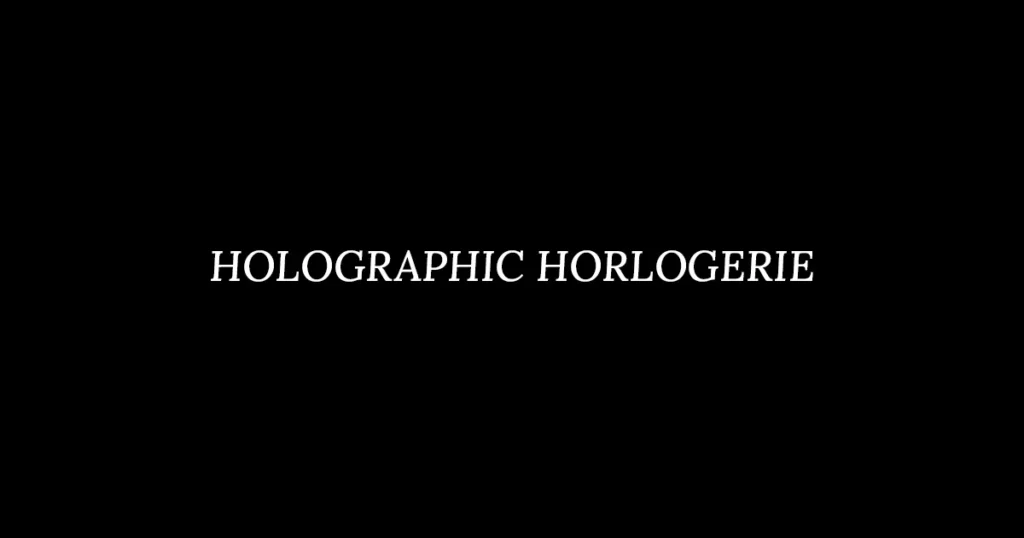Eco-Luxe Electronics: How Sustainable Materials Are Redefining Opulence in Tech
In a world where legacy luxury once equated to rare gemstones and gated exclusivity, a radical renaissance is underway: sustainability is the new status symbol . Gone are the days when opulence was confined to scarcity; today, the ultimate flex is a carbon-neutral footprint wrapped in ethical innovation .
Thesis : True modern luxury transcends material rarity it’s a manifesto. Sustainability has emerged as the ultimate benchmark of opulence in tech, merging cutting-edge eco-design with premium aesthetics , where conscious consumerism meets high-performance sophistication .
Context : This seismic shift is propelled by a collision of forces: Gen Z and millennial consumers demanding transparency and accountability , tech’s escalating environmental toll (think e-waste mountains and energy-guzzling data centers), and a cultural awakening that rejects “quiet luxury” for “conscious opulence.” Brands now craft AI-powered energy systems with circular lifecycles , blockchain-tracked sustainable supply chains , and regenerative materials all housed in minimalist, zero-waste packaging . Even Silicon Valley’s titans are pivoting, with Tesla’s electric vehicles and Patagonia’s recycled tech gear epitomizing “planet-positive” prestige .
As climate anxiety reshapes values, sustainable tech isn’t just a niche it’s the new aristocracy of innovation , where mindful materiality and carbon-negative ambitions reign supreme. Welcome to the era where saving the planet is the ultimate flex.
The Evolution of Luxury: From Excess to Ethics
Luxury has undergone a seismic transformation, shifting from conspicuous consumption to conscientious stewardship. Historically, opulence was defined by scarcity and excess: gold, rare earth metals, and non-recyclable plastics signaled wealth through their environmental and economic costs. These materials, often mined or produced unsustainably, epitomized a “more is more” ethos. From the gilded palaces of ancient empires to the diamond-studded excess of the Industrial Age, luxury was a spectacle of resource exploitation. Today, however, luxury is increasingly synonymous with responsibility. Brands now prioritize carbon neutrality, circular economies, and supply chain transparency, redefining prestige as a blend of ethical integrity and aesthetic excellence. This shift is driven by cultural forces like Gen Z and millennial consumers, who demand alignment with their values, and influencers advocating for eco-conscious lifestyles. Luxury is no longer about owning rare resources it’s about preserving them.
Historical Context: The Roots of Opulence
To fully appreciate this evolution, it’s essential to trace luxury’s origins. In ancient civilizations, luxury was tied to craftsmanship and rarity. Egyptian pharaohs adorned themselves with gold and lapis lazuli, materials sourced at great human and environmental cost. During the Renaissance, European aristocracy flaunted silk, spices, and precious gems acquired through colonial trade networks, often ignoring the exploitation behind their acquisition. The Industrial Revolution amplified this trend, enabling mass production of luxury goods but relying on unchecked resource extraction. The 20th century saw luxury democratized yet still defined by excess as fast fashion and disposable tech normalized overconsumption. Today’s ethical luxury movement disrupts this legacy, framing responsibility as the ultimate marker of exclusivity.
Cultural Drivers: The Values Revolution
The modern redefinition of luxury is fueled by generational shifts. Millennials and Gen Z, who will hold an estimated $30 trillion in purchasing power by 2030, prioritize purpose over prestige. A 2023 McKinsey report found that 67% of these consumers consider sustainability when purchasing luxury goods, rejecting brands that prioritize profit over planetary health. Influencers like Emma Watson and climate activists such as Greta Thunberg have amplified this ethos, leveraging social media to champion brands that align with circular economy principles. Even legacy fashion houses like Gucci and Burberry now tout carbon-neutral collections, signaling a tectonic shift in what it means to be “luxurious.”
Sustainable Materials Transforming Tech
The tech industry, once a symbol of environmental excess due to e-waste and energy-intensive production, is now leading the charge in ethical innovation. By adopting sustainable materials, brands are proving that cutting-edge technology can coexist with ecological stewardship.
- Recycled Metals : Apple’s MacBook line uses 100% recycled aluminum, reducing mining-related emissions by 49% compared to virgin materials. Similarly, Google’s Pixel 8 incorporates recycled rare earth magnets, addressing the environmental toll of mining neodymium and dysprosium.
- Bioplastics & Composites : Samsung’s Galaxy S23 uses bio-resin derived from cornstarch and sugarcane, cutting fossil fuel reliance. Meanwhile, LanzaTech’s carbon-capture technology converts industrial emissions into ethanol, which is polymerized into durable plastics for products like yoga mats and phone cases. Startups like Notpla are even creating seaweed-based biodegradable packaging for tech accessories.
- Natural Materials : Dell’s mycelium foam, grown from mushroom roots, replaces styrofoam in packaging, decomposing in weeks rather than centuries. Bamboo, a fast-growing, renewable resource, is now used for keyboards (like those from Asus) and speaker casings, offering a sleek, organic aesthetic.
- Upcycled Tech : Adidas x Parley’s collaboration transforms ocean-recovered plastics into high-performance headphones, while brands like Rothy’s weave marine debris into laptop sleeves. Even luxury watchmakers, such as Panerai, are experimenting with recycled titanium and ceramic composites.
The Science Behind Sustainable Materials
Innovations in material science are critical to this shift. Bioplastics, for instance, require 60% less energy to produce than conventional plastics and generate fewer greenhouse gases. Carbon-capture plastics, pioneered by companies like Newlight Technologies, sequester methane emissions to create AirCarbon a material used in fashion and tech. Meanwhile, advancements in metallurgy allow for infinitely recyclable alloys, such as Nokia’s recycled aluminum phone frames, which maintain structural integrity across multiple life cycles.
Design Innovation: Merging Aesthetics and Ethics
Modern design transcends mere functionality, blending elegance with environmental responsibility. This philosophy, often termed “quiet luxury,” emphasizes subtlety, durability, and purpose.
- Minimalist Elegance : Framework Laptop’s modular design features a sleek, anodized aluminum chassis that’s both repairable and timeless. By avoiding trendy aesthetics, the product resists obsolescence, reducing e-waste. Similarly, Bang & Olufsen’s Beosound A5 speaker combines minimalist Danish design with a modular interior, allowing users to upgrade components rather than replace the entire unit.
- Modular & Repairable : Fairphone’s user-replaceable camera modules and batteries challenge the tech industry’s planned obsolescence model. Luxury brands like Maison Margiela have adopted this ethos, offering modular smartwatches with customizable straps and faces. Even Apple’s iPhone 15 now includes a USB-C port, simplifying repairs and reducing e-waste.
- Energy Efficiency : Samsung’s Eco Remote, powered by solar cells and radio frequency harvesting, eliminates battery waste. Low-power E Ink displays, used in devices like the Huawei Mate X3, consume 80% less energy than traditional screens. Startups like Nimble are creating solar-powered chargers with recycled aluminum housings, merging form and function.
The Role of Artisanal Craftsmanship
Ethical luxury also revives traditional craftsmanship. Brands like LVMH-owned Gabriela Hearst collaborate with Indigenous artisans to create tech accessories using heritage techniques, such as handwoven palm leaf iPad cases. These partnerships not only preserve cultural heritage but also promote fair labor practices, ensuring artisans receive equitable compensation.
The Future of Ethical Luxury
As the luxury sector evolves, several trends will shape its trajectory:
- AI-Driven Sustainability : Algorithms will optimize material usage, reducing waste in production. Brands like Stella McCartney are already using AI to design low-impact textiles.
- Blockchain Transparency : Platforms like Arianee provide digital passports for luxury goods, tracking materials from source to shelf to verify ethical claims.
- Regenerative Practices : Companies will move beyond sustainability to regeneration, restoring ecosystems through initiatives like Timberland’s reforestation projects.
Case Studies: Brands Leading the Eco-Luxe Revolution
Apple: Pioneering Circular Innovation
Apple’s eco-luxe strategy centers on its Daisy recycling robot , which can disassemble 23 iPhone models at a rate of 1.2 million devices annually, recovering rare materials like tungsten, aluminum, and cobalt with 98% purity. These reclaimed materials are reintegrated into new products, such as the iPhone 14’s 100% recycled aluminum enclosure and rare earth magnets in the Taptic Engine. The company’s 2030 carbon-neutral goal spans its entire supply chain, including a $4.7 billion Green Bond to fund renewable energy projects. Apple also introduced Robot Dave , a successor to Daisy, to process MacBooks and iPads, showcasing its commitment to closed-loop systems.
Bang & Olufsen: Sustainable Aesthetics
The Danish audio brand partners with Kvadrat , a leader in upcycled textiles, to craft speaker grilles from 77% post-consumer recycled plastic bottles. Collections like the Beosound A5 feature FSC-certified wood and aluminum sourced from hydro-powered facilities. Each product includes a “passport” detailing its carbon footprint and material origins. Bang & Olufsen’s Lifetime Warranty program reinforces longevity, allowing customers to repair or refurbish devices, aligning with luxury buyers’ desire for heirloom-quality items.
Fairphone: Ethical Modularity as a Luxury
Fairphone’s modular smartphones (e.g., Fairphone 5) allow users to replace batteries, cameras, and screens independently, extending device lifespan to 5+ years far exceeding the industry average of 2.5 years. The company sources Fairtrade gold and conflict-free tin from Rwanda, with 85% of suppliers audited for labor practices. Its Fairphone Community platform educates users on repair culture, fostering loyalty among eco-conscious tech enthusiasts.
Emerging Brands: Disrupting with Biodegradable Tech
- Nimble : Known for compostable wireless chargers made from bamboo and plant-based biopolymers, Nimble uses 97% plastic-free packaging. Their “One-for-One” program donates a recycling kit for every product sold.
- Pela : Creator of 100% biodegradable phone cases from flax straw and cornstarch, Pela has diverted 1.7 million pounds of plastic from landfills. Their “30-Day Compost Challenge” encourages customers to return used cases for industrial composting.

The Consumer Perspective: Why Eco-Luxe Sells
Demographic Shift: Values-Driven Spending
- Gen Z & Millennials Lead : A 2023 McKinsey survey found 68% of Gen Z and 60% of Millennials prioritize sustainability over brand loyalty, with affluent buyers (earning $150k+/year) spending 30% more on eco-luxe products.
- Luxury Market Growth : The global sustainable luxury market is projected to hit $35 billion by 2027 (Allied Market Research), driven by demand for guilt-free indulgence.
Status Symbol 2.0: Conscious Consumerism
- Influencer Impact : Celebrities like Leonardo DiCaprio and Emma Watson champion eco-luxe brands, amplifying their aspirational appeal.
- Exclusivity Through Ethics : Limited-edition releases, such as Stella McCartney’s Falabella GO backpack (made from Mylo mushroom leather), create urgency while aligning with environmental values.
Transparency Demands: Blockchain Traceability
- IBM Food Trust for Tech : Brands like Dell use blockchain to track cobalt from Congolese mines to factories, ensuring conflict-free sourcing.
- Material “Passports” : Adidas’ FUTURECRAFT.LOOP sneakers include QR codes revealing each component’s origin and recyclability.
Challenges & Criticisms
Cost Barriers: The Price of Premium Sustainability
- Recycled Materials Markup : Recycled gold costs 1,200/ouncevs.900/ounce for mined gold due to complex purification processes.
- Labor Costs : Ethical factories in Europe (e.g., Fairphone’s suppliers) charge 20% more than Asian counterparts, raising retail prices.
Greenwashing Risks: Authenticity vs. Marketing
- Case Study : H&M’s “Conscious Collection” faced backlash for vague claims about recycled content, prompting lawsuits under the EU’s Green Claims Directive.
- Certification Solutions : The Cradle to Cradle Certified™ label ensures products meet strict standards for material health, reuse, and social fairness.
Scalability: Balancing Ethics and Demand
- Supply Chain Constraints : Biodegradable plastics require industrial composting facilities, which exist in only 15% of U.S. municipalities.
- Innovation Partnerships : Adidas collaborates with Parley for the Oceans to convert 11 million plastic bottles/year into sneakers, demonstrating scalable circularity.
The eco-luxe revolution merges opulence with environmental stewardship, driven by tech innovation and shifting consumer values. While challenges like cost and scalability persist, brands that invest in transparency, modular design, and partnerships will lead the market. As Gen Z’s spending power grows, eco-luxe is poised to redefine luxury not as excess, but as a catalyst for planetary regeneration.
Future Trends: Beyond the Gimmick
The evolution of eco-luxe electronics is moving beyond superficial sustainability claims, driven by groundbreaking innovations, systemic policy shifts, and a cultural redefinition of luxury. Below is a deeper exploration of the trends shaping this transformation.
Next-Gen Materials: Algae-Based Batteries, Self-Healing Polymers
Algae-Based Batteries
Algae-derived batteries represent a paradigm shift in energy storage. Unlike lithium-ion batteries, which rely on mining rare earth metals (e.g., cobalt, lithium) linked to environmental degradation and human rights abuses, algae batteries use organic compounds like cellulose and sodium-ion electrolytes. For example, startups such as Algi Batteries are pioneering prototypes that offer comparable energy density to lithium cells while being fully compostable. These batteries decompose within months under industrial composting conditions, addressing the 53.6 million metric tons of e-waste generated globally in 2023 (UN E-waste Monitor). Luxury brands could integrate these into premium devices, marketing them as both high-performance and zero-waste.
Self-Healing Polymers
Self-healing materials, inspired by biological systems, are revolutionizing product durability. Polymers embedded with microcapsules of healing agents (e.g., dicyclopentadiene) or reversible chemical bonds (e.g., Diels-Alder reactions) can repair scratches, cracks, or corrosion when exposed to heat or UV light. For instance, automotive luxury brands like Lexus have experimented with self-healing paint for high-end cars, while tech applications include smartphone screens that mend minor damage. In electronics, this technology reduces waste by extending product lifespans—a critical rebuttal to the 1.5-year average smartphone replacement cycle (Statista, 2023).
Other Innovations
- Mushroom Mycelium Packaging : Brands like Dell and IKEA use mycelium-based packaging, which biodegrades in weeks versus centuries for styrofoam.
- Lab-Grown Gemstones : Companies such as Diamond Foundry create diamonds via plasma reactors, avoiding the ecological toll of mining.
Tech Meets Nature: IoT Devices Monitoring Environmental Impact
Consumer-Facing IoT
Smart thermostats like Google Nest now integrate carbon tracking, showing users real-time data on their energy grid’s carbon intensity and suggesting optimal usage times. Wearables such as the Circular smart ring go further, pairing health metrics with carbon footprint calculations based on transportation, diet, and energy use. Luxury brands could elevate these tools by embedding them in high-design devices—think a Montblanc pen that tracks paper waste or a TAG Heuer smartwatch with carbon offset integrations.
Industrial IoT for Sustainability
In manufacturing, IoT sensors optimize resource efficiency. For example:
- Smart Grids : Siemens’ IoT-enabled grids reduce energy waste by dynamically balancing supply and demand.
- Supply Chain Transparency : LVMH uses IoT tags to track raw materials from source to store, ensuring ethical sourcing of metals and minerals.
- Predictive Maintenance : Sensors in factories detect equipment inefficiencies, cutting energy use by up to 20% (McKinsey, 2022).
Behavioral Impact
Studies show real-time feedback via IoT can reduce household energy use by 10–15% (Nature Energy, 2023). Luxury brands can leverage this by gamifying sustainability e.g., a Rolex app rewarding users with “planet points” for low-carbon choices, redeemable for exclusive experiences.
Policy & Collaboration: EU’s Right to Repair Laws; Industry Coalitions
EU’s Right to Repair Laws
The EU’s Ecodesign Directive (2024) mandates that electronics (smartphones, laptops, appliances) meet strict repairability criteria:
- Modular Design : Products must use standardized screws and removable batteries.
- Availability of Parts : Manufacturers must provide spare parts for 7–10 years post-purchase.
- Software Support : Updates must last at least 5 years to prevent obsolescence.
Penalties for non-compliance include fines up to 4% of global revenue. This forces luxury brands like Apple and Samsung to redesign products, prioritizing longevity over frequent upgrades.
Industry Coalitions
Cross-sector partnerships are accelerating innovation:
- Circular Electronics Partnership (CEP) : A coalition of tech giants (HP, Dell, Fairphone) and NGOs aiming for 100% recyclable devices by 2030.
- Material Innovation Labs : Adidas and Parley for the Oceans collaborate on sneakers made from ocean plastic, while BMW partners with MIT to develop 3D-printed biodegradable car parts.
- Open-Source Sustainability : Google’s Grassroots Ecology platform shares patents for eco-friendly tech, democratizing access to innovations like algae batteries.
Conclusion: Sustainability as the Ultimate Luxury
Restate Thesis
Eco-luxe electronics redefine opulence by merging cutting-edge innovation with ethical responsibility. Luxury is no longer about conspicuous consumption but about exclusivity rooted in sustainability products that are rare, timeless, and regenerative.
Call to Action
- Consumers : Demand certifications like EPEAT Gold or Cradle to Cradle, and support brands with transparent supply chains (e.g., Patagonia’s Footprint Chronicles ).
- Brands : Invest in closed-loop systems, such as Apple’s robot Dave , which disassembles iPhones to recover rare materials.
- Policymakers : Expand Right to Repair laws globally and incentivize R&D for green materials via tax breaks.
Closing Thought
“The future of luxury isn’t just smart it’s wise.” As climate crises escalate, luxury must become a catalyst for regeneration. Imagine a Hermès bag lined with mycelium leather or a Vertu phone with an algae battery products that symbolize status not through excess, but through wisdom. In this future, luxury is a force for good, proving that elegance and ethics are forever intertwined.
for more visit Mavlluxury




